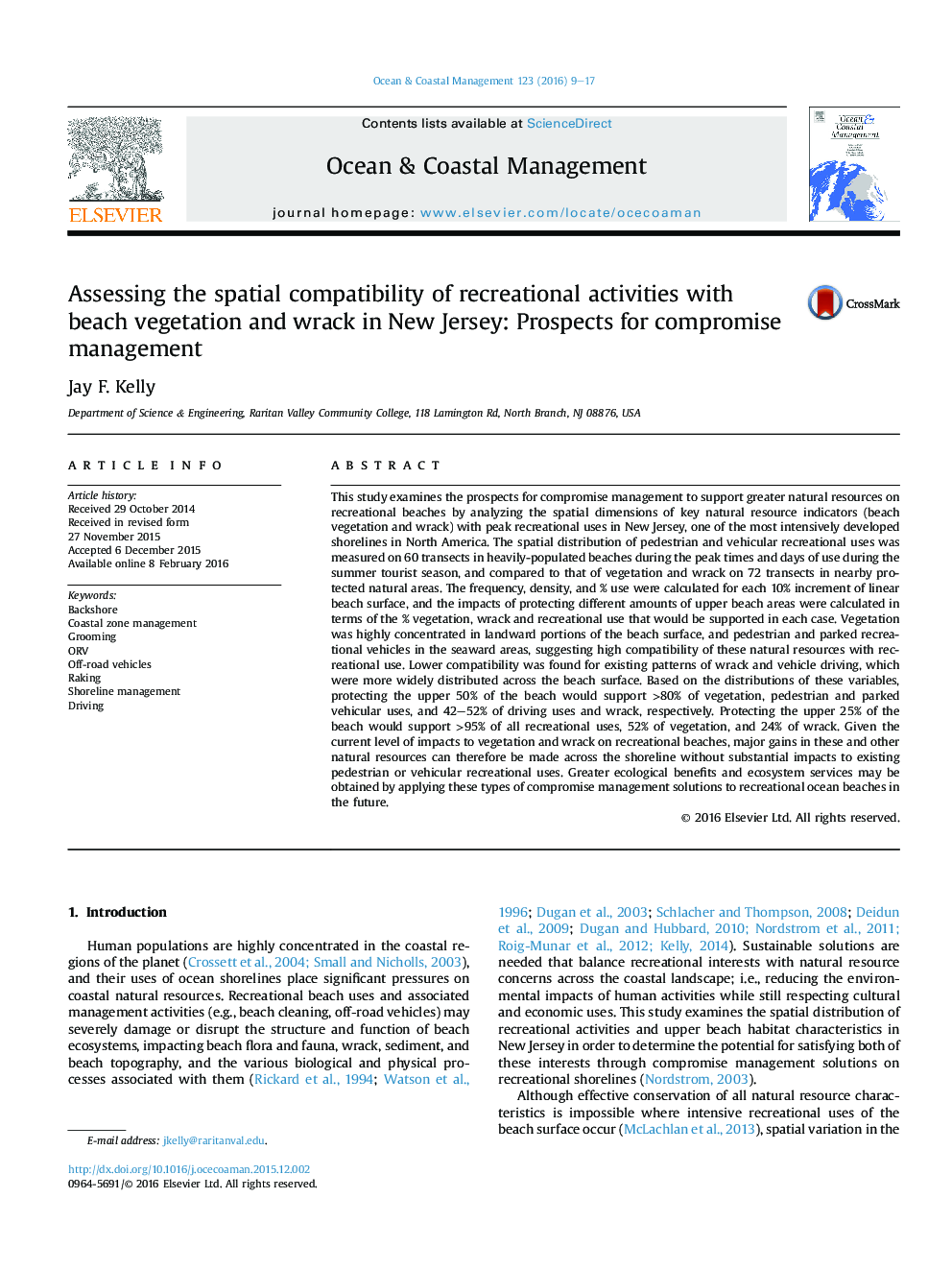| کد مقاله | کد نشریه | سال انتشار | مقاله انگلیسی | نسخه تمام متن |
|---|---|---|---|---|
| 1723356 | 1520506 | 2016 | 9 صفحه PDF | دانلود رایگان |
• Sustainable solutions are needed to balance recreational uses of coastal environments with natural resource concerns.
• The spatial distribution of peak recreational uses (pedestrian and vehicular), vegetation, and wrack were studied on ocean beaches in New Jersey, one of the most intensively developed shorelines in North America.
• Recreational uses were found to be highly concentrated in seaward portions of the beach surface, and vegetation and wrack were concentrated in landward areas.
• Protection of the landward areas of the beach would allow for the majority of recreational activities to occur, along with the majority of potential beach vegetation and wrack.
• Compromise management solutions of this kind present opportunities for substantially enhancing natural resource characteristics and associated ecosystem services on recreational shorelines in the future.
This study examines the prospects for compromise management to support greater natural resources on recreational beaches by analyzing the spatial dimensions of key natural resource indicators (beach vegetation and wrack) with peak recreational uses in New Jersey, one of the most intensively developed shorelines in North America. The spatial distribution of pedestrian and vehicular recreational uses was measured on 60 transects in heavily-populated beaches during the peak times and days of use during the summer tourist season, and compared to that of vegetation and wrack on 72 transects in nearby protected natural areas. The frequency, density, and % use were calculated for each 10% increment of linear beach surface, and the impacts of protecting different amounts of upper beach areas were calculated in terms of the % vegetation, wrack and recreational use that would be supported in each case. Vegetation was highly concentrated in landward portions of the beach surface, and pedestrian and parked recreational vehicles in the seaward areas, suggesting high compatibility of these natural resources with recreational use. Lower compatibility was found for existing patterns of wrack and vehicle driving, which were more widely distributed across the beach surface. Based on the distributions of these variables, protecting the upper 50% of the beach would support >80% of vegetation, pedestrian and parked vehicular uses, and 42–52% of driving uses and wrack, respectively. Protecting the upper 25% of the beach would support >95% of all recreational uses, 52% of vegetation, and 24% of wrack. Given the current level of impacts to vegetation and wrack on recreational beaches, major gains in these and other natural resources can therefore be made across the shoreline without substantial impacts to existing pedestrian or vehicular recreational uses. Greater ecological benefits and ecosystem services may be obtained by applying these types of compromise management solutions to recreational ocean beaches in the future.
Journal: Ocean & Coastal Management - Volume 123, April 2016, Pages 9–17
